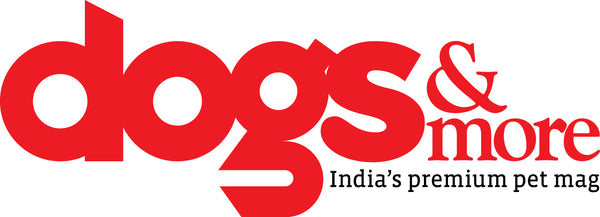You serve your pet their favorite meal or open a pack of fresh food and they refuse to eat it. This can be a very concerning sight to any pet parent. Sometimes, your pet may refuse to eat their food for a simple reason like - boredom and sometimes it could be because they’re feeling unwell. Whatever the reason, as responsible pet parents, you must ensure that you stay alert and take the right measures when your cat or dog won’t eat anything. In this blog, we will understand the reasons for your cat or dog not eating food, at-home tips to make your pet’s food more interesting and when you should visit your vet.
Reasons why your cat or dog is not eating food
One of the most common queries that our vets at Wiggles.in come across is - “My dog is not eating, what can I do?” Here are some reasons as to why your dog may not be eating:
Illness
The most common sign pets display when they’re ill is the refusal to eat. Like us, when we’re ill, we do not feel like eating or rather are just too sick to eat. It doesn’t indicate serious health problems but prompt veterinary attention is of the utmost importance so that your pet can get immediate help and the cause can be addressed as soon as possible.
Dental diseases
Your cat or dog may not eat because of a dental problem that is causing pain in their mouth. Get them checked for oral problems like broken teeth, gingivitis or oral tumor. Dental problems, if not addressed in time, can lead to severe health issues in the future. Hence, it is important to maintain proper dental hygiene by regular cleaning and grooming.
Your cat may refuse to eat their food for several reasons.
Vaccinations
If your pet has been vaccinated recently, it could be a cause for them to not eat their food. Some vaccinations can make them feel lethargic and drowsy resulting in loss of appetite. This, however, is a temporary and minor hurdle and your pet should be back to their normal self within a couple of days. If your pet is not eating for a prolonged period of time after their vaccination, you need to contact your vet.
Respiratory problems
Most often, when a pet has a respiratory problem, they are unable to smell their food because of blockage in their nose. Cats especially will refuse to eat their food if they can’t smell it.
Digestive problems
Health problems in the digestive system can be another reason why your cat or dog is not eating food. Refusal to eat is usually the first sign of a digestive problem.
Illness is one of the most common causes for a dog not eating food.
Foreign materials
Our cats and dogs are inherently curious and will chew or eat things that they aren’t supposed to. This is especially true when they’re in their kitten or puppy stage. These foreign bodies can cause an upset stomach or create an obstruction leading to digestive problems. Cats are prone to developing hairballs that create obstructions that won’t let the food pass.
Change in routine
If a family member is traveling, if you have started working from the office again or if there is any kind of change in your routine, your pet may not eat due to stress or anxiety.
Traveling
Motion sickness or new places and surroundings can make your pets feel stressed out or anxious and they may not like to eat their food in such situations.
Pickiness
Some pets are just picky, especially if your pet is a cat. Trying different types of food or homemade fresh food can entice them to eat.
Food issues that can cause a pet to stop eating
- The food has gone bad or is spoiled
- The food flavor is not enticing to your pet anymore: This is a common occurrence with cat food because cats are very picky eaters and will notice the slightest difference in their food if the manufacturer has made any changes to their usual food
- Your pet is bored of the food
- The shape of the food: Some pets prefer kibble in the shape of triangles, some like it in circles and some others will only eat crunchy or wet food
What can you do to make your pet’s food more interesting?
The first thing to do when your cat or dog is not eating is to call your vet. Once you’ve cleared out that the cause for loss of appetite is not due to a medical problem, you can try these at-home tips to entice your pet to eat again.
1.Try different types of food
Don’t just stick to dry food or just wet food. Switch the food, mix the dry food and wet food together or try different flavors or brands and see what works best for your pet. Be careful to introduce the new food gradually so as to not upset their stomach with a sudden change.
YKibble™ Oven-Baked Dry Food For Dogs YKibble™ Oven-Baked Dry Food For Puppies
Wiggles Ready To Serve Wet Food For Dogs & Puppies
- Add a palatable topper
Remove the bones and add some fresh chicken, fish or meat (cleaned and cooked properly) on top of their food. Chicken broth, meat broth or fish broth can be mixed to increase palatability and make food more exciting. Supplements and drinks for pets that increase the palatability of food can be used too.
Cocotail™ Health Drink For Pets Furliv™ Liver Tonic & Appetizer 3.
- Warm-up their food
Add a tablespoon of warm water or heat their food in the microwave for a few seconds, this can increase the smell of the food and make it more palatable for them. Make sure the food is not too hot so that your pet doesn’t burn their tongue while eating it.
- Take them for a walk before their meal
Exercising or walking can make your pet feel hungry and build their appetite. If you’ve got a cat, try playing some games that involve physical activity and make them hungry.
- Try different types of feeding bowls
Getting new feeding bowls like puzzle bowls or food dispensers that can make mealtimes fun for them. Also, make sure the bowl is kept at the proper height, not too high, not too low and is cleaned regularly.
- Consistent timings
Feed them 2 to 3 times a day and keep the timings consistent. Do not let the food sit out for too long, take it back if your pet hasn’t finished their meal in 15 minutes. This will help build a routine and not make them feel like food is available at all times.
- Try more homemade food
Homemade food that uses fresh meats and ingredients can help your pet regain their appetite too.
- Reduce treats
One common query that we get is - “Why is my dog not eating food but will eat treats?” It’s probably because they dislike their food and only enjoy treats. Don’t make a habit of giving too many treats and spoiling their appetite for their meal and try to make their meals more palatable. Too many treats in a day can make them feel too full to eat their food.
When should you visit the vet?
You should speak to your vet immediately if your cat or dog has lost their appetite and stopped eating food. Your vet will conduct a thorough diagnosis and suggest the next steps accordingly. If your pet is displaying extreme lethargy or is vomiting, has diarrhea or any other unusual symptoms, you should visit the vet at once. If you can’t visit a vet, opt for an online consultation with a vet via video call. Consulting a pet nutritionist can also help your pet regain their appetite as you get customized diet plans that are enticing and healthy for your pet.
Whenever you need help for your pet, know that our vets, nutritionists, trainers, behaviorists, groomers and pet experts are just a phone call away +91 8431620000
Team Wiggles has started an initiative called #BondedByBlood through which we are trying to create an online repository of ready pet donors. Register your pet today & save a life tomorrow - https://bit.ly/BBBDonorRegistration
Join Wiggles Tribe, our 20k+ community of pet parents on Facebook where our in-house team of vets help to answer your pet-related queries 24/7.
*Disclaimer: This blog is vet-approved and includes original content which is compiled after thorough research and authenticity by our in-house team of vets and content experts. It is always advisable to consult a veterinarian before you try any products, pet food or any kind of treatment/medicines on your pets, as each pet is unique and will respond differently.


















